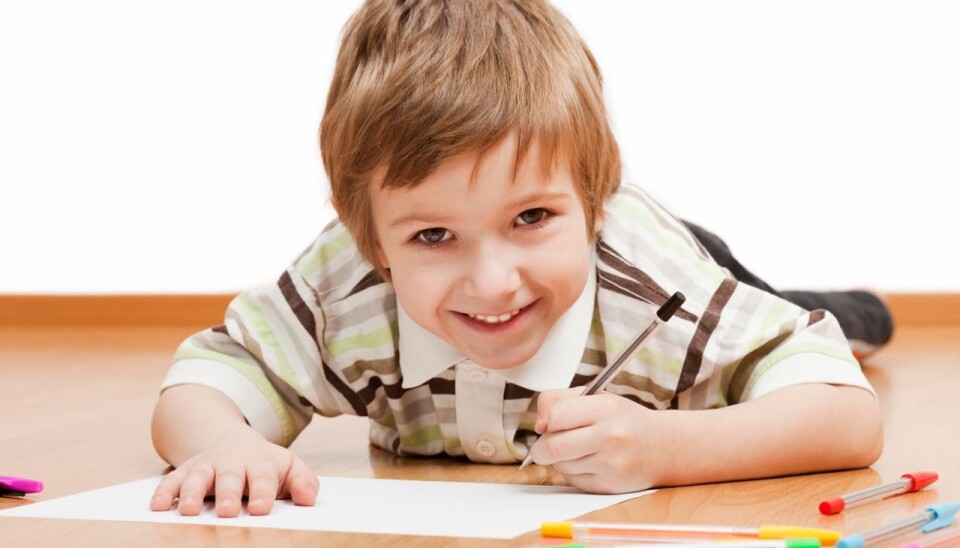
Common ADHD treatment has no effect
New PhD thesis finds no documented effect of a widespread form of treatment which aims to teach children with ADHD to succeed socially.
Red light, yellow light, green light. Don’t walk, wait, walk. Most of us receive this simple wisdom at a very early age.
And in the same way that a red light means ’don’t walk’ in traffic, some social situations, such as a budding fight, set off the inner warning lights in most people, making them withdraw from the situation.
However, for children with ADHD, reading situations is not that simple.
This is because the lack of social skills, such as the ability to understand implicit and explicit social norms, or the ability to understand and handle one’s own emotions, is part of the symptoms of ADHD. This creates problems, both for the children and the people that surround them.
No documented effect
The conclusion of both my own study and the meta-analysis is that even though both the parents and the children were happy about the treatment, it can’t be proven that it has any effect.
For this reason, so-called social skills training is often used as a supplement to the medical treatment of children with ADHD.
The social skills training is an attempt to teach the children the skills they haven’t developed naturally, and the treatment is widespread.
In the US, the UK and the Netherlands, social skills training is part of the recommended ADHD treatment.
However, according to a new PhD thesis written by child psychologist Ole Jakob Storebø, who works in the child psychiatry sector in the Zealand Region of Denmark, the treatment has no documented effect.
Effect can neither be proved nor disproved
Storebø has studied 56 children who were divided into two groups. One group received social skills training, while the other did not.
In addition, the researcher has carried out a so-called meta-analysis. He has looked at 11 different studies that examined the effect of social skills training.
The objective of the training is to teach the children a set of different reaction patterns through behavioural therapy. The children must learn to think before they act and to control their impulsivity.
One of the methods is to employ symbols of impulse control, such as stop lights. Red means ‘don’t’, yellow means ‘wait’ and green means ‘action’. The intention is that children should learn to recognise situations as green, yellow or red, and act accordingly.
“The conclusion of both my own study and the meta-analysis is that even though both the parents and the children were happy about the treatment, it can’t be proven that it has any effect,” says Storebø.
Primarily ADHD symptoms measured
The 56 children who participated in Storebø’s own study were diagnosed with different degrees of ADHD.
Of all the children in the experiment, 43 percent suffered from other mental illnesses in addition to their ADHD. The researchers accounted for this by dividing the children into groups in a manner that made them as similar as possible in terms of age, gender and mental health.
The researchers primarily measured ADHD symptoms, but also aggressive behaviour and social and academic skills.
The children were examined at the beginning of treatment and again after three and six months. On the basis of these examinations Storebø concluded that social skills training has no apparent effect.
Later effect cannot be eliminated
Meanwhile, Storebø is keen to point out that even though any apparent effect of the training couldn’t be proven directly following the examinations, it’s not possible to rule out the possibility that an effect could be proven at a later stage.
“It is a frustrating conclusion, but nevertheless a common one. Lack of evidence is not evidence of lacking effects. This means that while there may not be evidence of any effect now, that may change.”
The researcher adds that there is currently a lack of high quality studies with a sufficiently high number of test persons.
He believes that a development of the social skills training is called for, in order for there to be any measurable effect in the future.
“The ability of each child to form attachment to others was examined, and we found that 97 percent of the children had difficulties forming attachments,” he says.
“This indicates that there is a need to develop the social skills training so as to make it work on the more fundamental levels of personality.”
Guidelines and reservations
Social skills training is part of the recommended ADHD treatment in a number of countries, and the European guidelines are no exception, says Storebø.
However, there are certain reservations. In the programme of reference the authors list a number of issues with the studies, but do nevertheless conclude that “overall, there is some evidence that social skills training can improve the child’s social skills and behaviour at home, according to the parents and the child.”
However, this evidence is not found by Storebø, and the Danish clinical guidelines for ADHD that are currently under consideration take Storebø’s research into account.
The authors state that “the evidence that social skills training works continues to be limited.”
-------------------------------
Read this article in Danish at videnskab.dk
Translated by: Iben Gøtzsche Thiele











